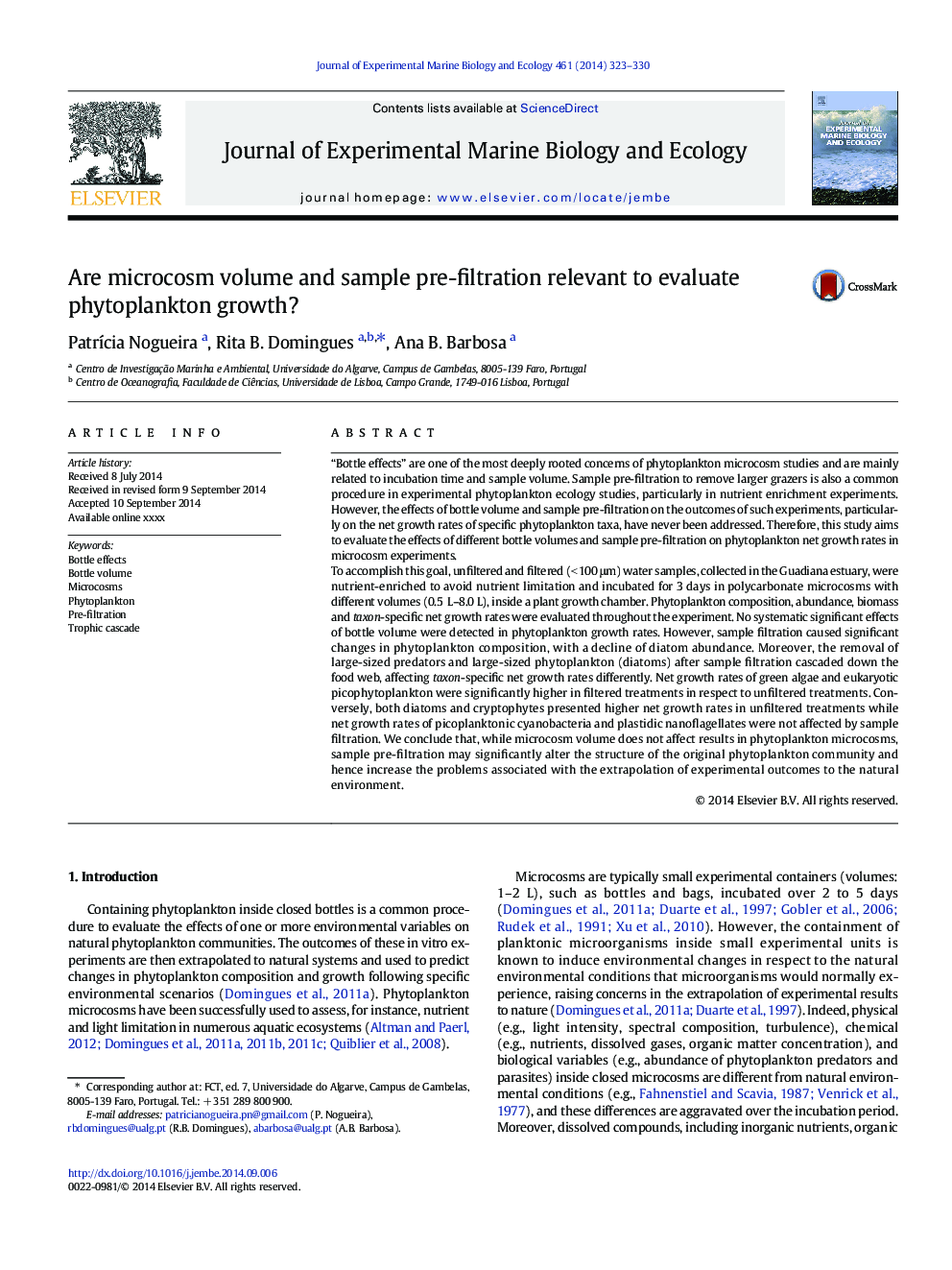| Article ID | Journal | Published Year | Pages | File Type |
|---|---|---|---|---|
| 6303973 | Journal of Experimental Marine Biology and Ecology | 2014 | 8 Pages |
Abstract
To accomplish this goal, unfiltered and filtered (< 100 μm) water samples, collected in the Guadiana estuary, were nutrient-enriched to avoid nutrient limitation and incubated for 3 days in polycarbonate microcosms with different volumes (0.5 L-8.0 L), inside a plant growth chamber. Phytoplankton composition, abundance, biomass and taxon-specific net growth rates were evaluated throughout the experiment. No systematic significant effects of bottle volume were detected in phytoplankton growth rates. However, sample filtration caused significant changes in phytoplankton composition, with a decline of diatom abundance. Moreover, the removal of large-sized predators and large-sized phytoplankton (diatoms) after sample filtration cascaded down the food web, affecting taxon-specific net growth rates differently. Net growth rates of green algae and eukaryotic picophytoplankton were significantly higher in filtered treatments in respect to unfiltered treatments. Conversely, both diatoms and cryptophytes presented higher net growth rates in unfiltered treatments while net growth rates of picoplanktonic cyanobacteria and plastidic nanoflagellates were not affected by sample filtration. We conclude that, while microcosm volume does not affect results in phytoplankton microcosms, sample pre-filtration may significantly alter the structure of the original phytoplankton community and hence increase the problems associated with the extrapolation of experimental outcomes to the natural environment.
Related Topics
Life Sciences
Agricultural and Biological Sciences
Aquatic Science
Authors
PatrÃcia Nogueira, Rita B. Domingues, Ana B. Barbosa,
